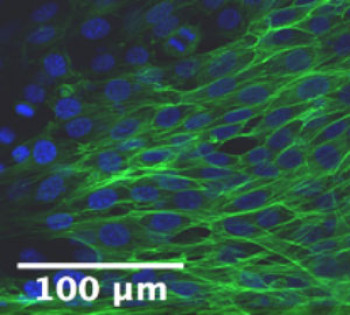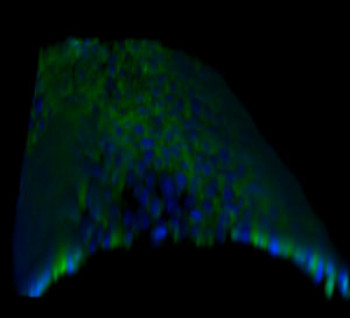Project
Using hydrogels for novel tissue engineering applications
| Primary Investigator: | Hazel Screen |
| Funder: | Leverhulme Trust Funded Visiting Research Professorship |
Leverhulme Trust Funded Visiting Research Professorship
One of the main aims of the visiting professorship was to establish a strong collaboration between our group and Dr Stephanie Bryant, bringing her skills in hydrogel development to our group. The overall research goal was to develop and establish a tunable synthetic hydrogel that could be used as a platform for the study of tenocyte mechanobiology.
Our platform is based on a novel fiber composite material consisting of short discontinuous stiff fiber-like hydrogel rods embedded into a less stiff bulk hydrogel matrix, mimicking the fascicle structure of tendons and capturing key features of tendon micromechanics. Dr Bryant's stay involved modifying the materials chemistry to enable the inclusion cell attachment peptides, whilst maintaining a tunable fibre composite material platform. By the completion of my visit, we had developed a platform that was suitable for tendon cells and where the micro-mechanics of shear and tension could be tuned.
The visiting professorship also facilitated a range of teaching opportunities, with Dr Bryant mentoring several postgraduate and undergraduate students during her stay. Her direct training of Dharmesh Patel was of huge benefit to our shared Arthritis Research UK studentship project in this area. Our laboratory is now fully set up to perform the necessary polymer synthesis for the project. Dr Bryant also gave two polymers workshops to Medical Engineering students at QMUL, focused on basic polymer structure and polymer properties, with hands-on demonstrations. These workshops have been developed into outreach activities for schools, to encourage students into the field of medical engineering.
Dr Bryant gave two Leverhulme Seminars during her stay, one at QMUL when I arrived and one at Cardiff University, chosen because of their large interest in cartilage biology and cartilage tissue engineering.



